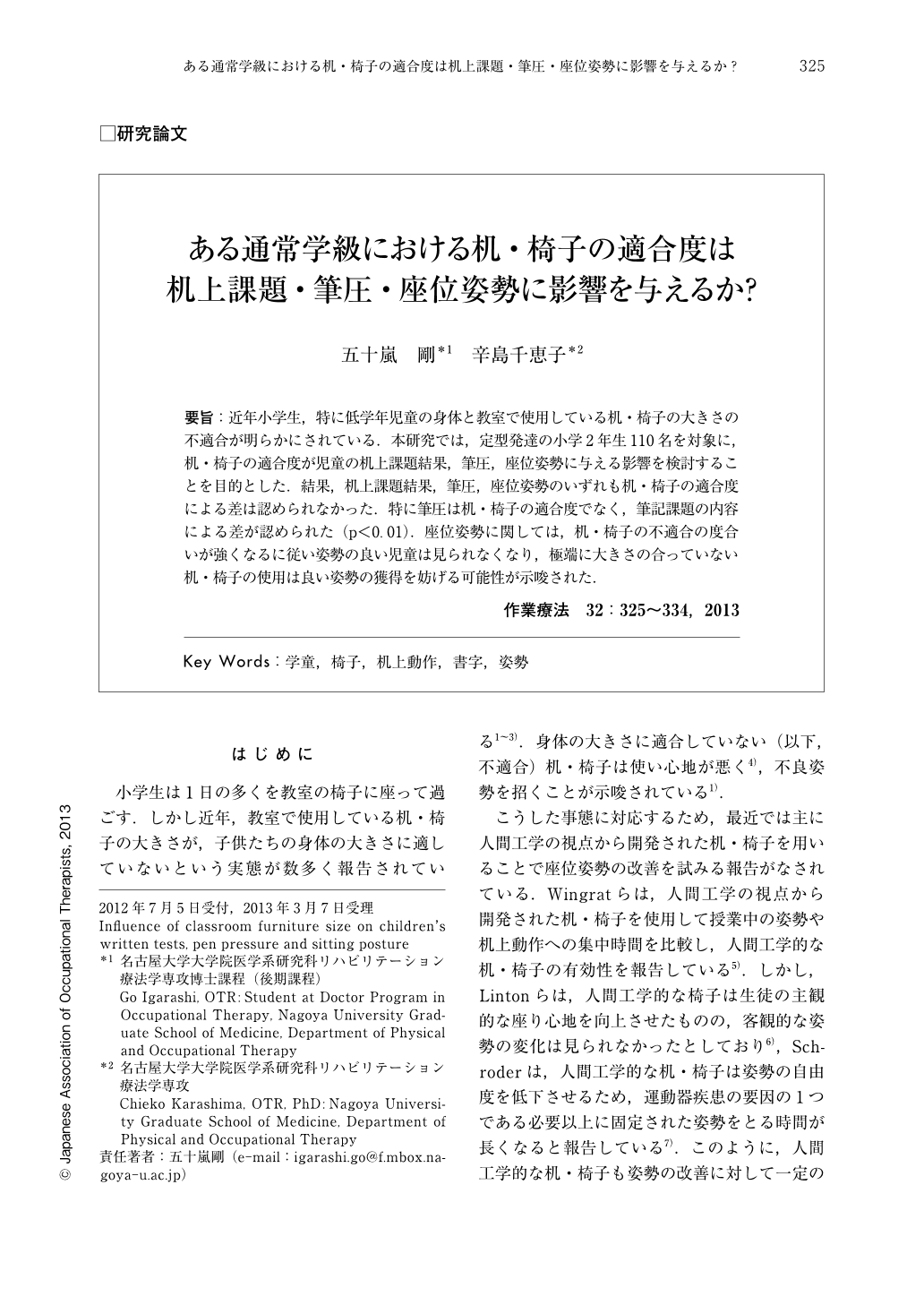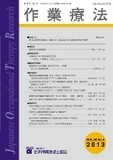Japanese
English
- 販売していません
- Abstract 文献概要
- 1ページ目 Look Inside
- 参考文献 Reference
- サイト内被引用 Cited by
要旨:近年小学生,特に低学年児童の身体と教室で使用している机・椅子の大きさの不適合が明らかにされている.本研究では,定型発達の小学2年生110名を対象に,机・椅子の適合度が児童の机上課題結果,筆圧,座位姿勢に与える影響を検討することを目的とした.結果,机上課題結果,筆圧,座位姿勢のいずれも机・椅子の適合度による差は認められなかった.特に筆圧は机・椅子の適合度でなく,筆記課題の内容による差が認められた(p<0.01).座位姿勢に関しては,机・椅子の不適合の度合いが強くなるに従い姿勢の良い児童は見られなくなり,極端に大きさの合っていない机・椅子の使用は良い姿勢の獲得を妨げる可能性が示唆された.
This study compared the influence of classroom furniture size on children's written tests, pen pressure and sitting posture. A total of 110 second-grade students participated in the study. The students' body dimensions and sizes of desks and chairs were measured. The students were divided into three groups: slightly inappropriate group, inappropriate group and severely inappropriate group. All groups took the written Developmental Test of Visual Perception (DTVP). Pressure of the pen and sitting posture were also assessed. Finally, the DTVP scores, pen pressure and sitting posture were compared among the groups. The results indicated no difference in DTVP scores, or pressure of the pen and sitting posture among the groups. However, in all groups the pressure of the pen was significantly low in the Eye-Motor Coordination test as compared with the Figure-Ground test and Spatial Relationships test (p<0.01). Regarding sitting posture, the larger the mismatch between the sizes of classroom furniture and students' body dimensions, the fewer the students with good sitting posture. The results suggest that classroom furniture did not influence the results of the written test and pressure of the pen, while sitting posture tended to be influenced by the classroom furniture sizes. To be concrete, inappropriate classroom furniture sizes can disturb good sitting posture.

Copyright © 2013, Japanese Association of Occupational Therapists. All rights reserved.


